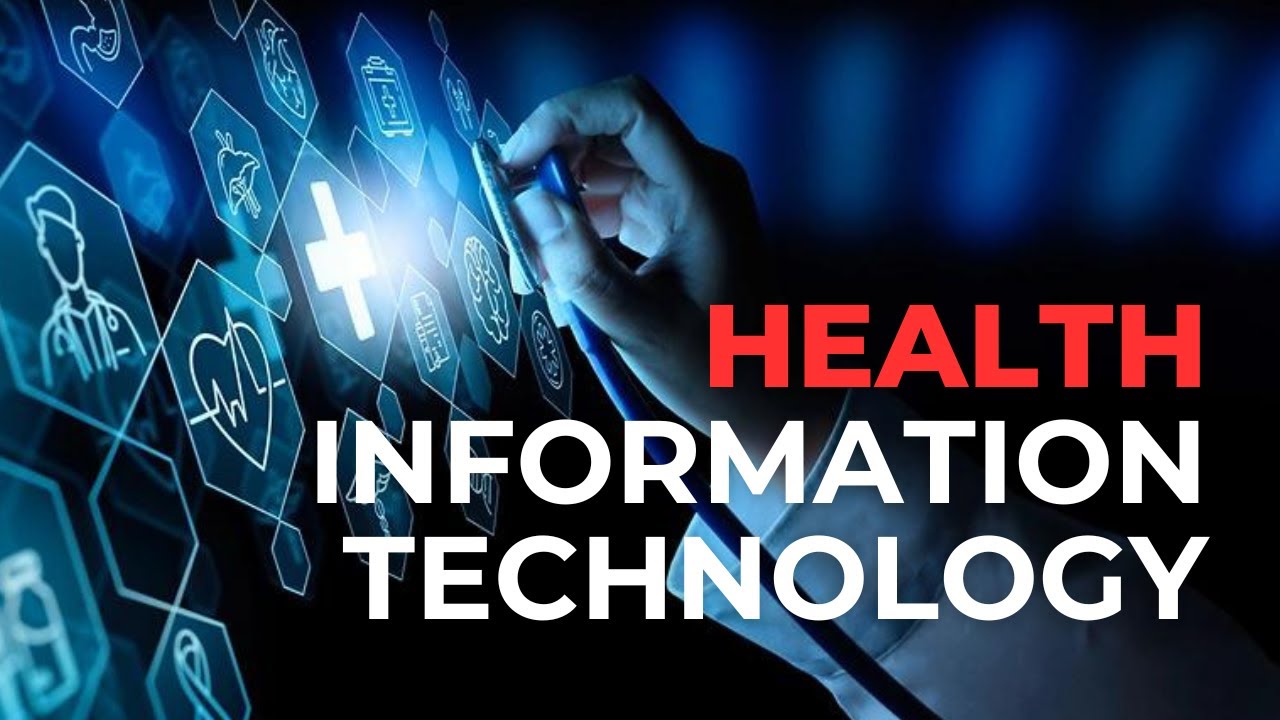
Revolutionizing Healthcare: The Comprehensive Impact of Health Information Technology
Health Information Technology (HIT) is revolutionizing the way healthcare systems operate. It encompasses the use of technology to manage, share, and analyse healthcare data to enhance the quality of care, reduce operational costs, and empower patients. As healthcare becomes increasingly digital, the role of HIT has expanded significantly, touching every aspect of patient care and administration.
This blog dives into the key components, benefits, challenges, and future trends of Health Information Technology, while illustrating its real-world impact with examples. We will also explore how HIT is shaping the global healthcare market and paving the way for a more efficient, patient-centred system.
What is Health Information Technology?
Health Information Technology refers to a broad range of digital tools and systems used in the healthcare industry to collect, store, and manage patient and operational data. HIT includes electronic health records (EHRs), telemedicine platforms, e-prescribing systems, and data analytics tools. It integrates seamlessly into clinical, administrative, and even public health domains, driving better outcomes for patients and healthcare providers.
Key Components of Health Information Technology
1. Electronic Health Records (EHRs)
- Innovation: EHRs are digital versions of patients’ paper charts, offering a real-time, patient-centred record that is instantly accessible to authorized users.
- Example: A patient with chronic diabetes visiting multiple specialists can have their EHR updated in real-time, enabling coordinated care and reducing the risk of contradictory treatments.
2. Telemedicine and Remote Monitoring
- Innovation: Telemedicine uses technology to provide medical care at a distance, while remote monitoring devices track patients’ vital signs.
- Example: A rural patient consults with a specialist through a video conferencing platform, saving time and resources.
- Example: Wearable devices like blood pressure monitors send real-time data to a doctor’s dashboard.
3. E-Prescribing Systems
- Innovation: E-prescribing allows physicians to send prescriptions directly to pharmacies electronically, minimizing errors and enhancing convenience.
- Example: A doctor’s e-prescription ensures the correct dosage reaches the pharmacy, reducing the risk of human error.
4. Health Information Exchange (HIE)
- Innovation: HIE enables secure data sharing among different healthcare organizations to ensure continuity of care.
- Example: A trauma patient’s history is accessed seamlessly from another hospital’s records, facilitating prompt treatment.
5. Decision Support Systems (DSS)
- Innovation: These tools analyse patient data to support clinical decision-making by offering evidence-based recommendations.
- Example: A DSS may flag potential drug interactions for a pharmacist filling a new prescription.
6. AI-Powered Diagnostics
- Innovation: Artificial intelligence analyses complex medical data to detect conditions and recommend treatments.
- Example: PathAI uses AI to improve the accuracy of pathology diagnoses, such as identifying cancer cells in biopsy samples with high precision.
7. Wearable Health Tech
- Innovation: Devices tracking vitals like heart rate, sleep, and activity to promote proactive health management.
- Example: The Apple Watch monitors heart rhythms and alerts users to irregularities, potentially preventing strokes or heart attacks.
8. Blockchain for Data Security
- Innovation: Ensures secure, tamper-proof storage of medical data and patient records.
- Example: Medical chain uses blockchain to give patients control over their health records while allowing secure sharing with healthcare providers.
9. IoT in Healthcare
- Innovation: Internet-connected devices for continuous health monitoring and data collection.
- Example: Dexcom’s Continuous Glucose Monitoring (CGM) system helps diabetics track their glucose levels in real-time, reducing the need for frequent blood tests.
10. Predictive Analytics
- Innovation: Big data tools analysing health trends to predict outbreaks, optimize resources, and enhance patient care.
- Example: IBM Watson Health predicts patient outcomes and recommends treatment plans by analysing vast amounts of medical literature and patient data.
11. Robotic Process Automation (RPA)
- Innovation: Automating administrative tasks like appointment scheduling and billing.
- Example: UiPath’s RPA tools streamline hospital operations, reducing paperwork and enabling staff to focus on patient care.
12. Interoperability Platforms
- Innovation: Systems enabling seamless communication between disparate healthcare technologies.
- Example: Cerner’s interoperability platform allows EHRs from different providers to exchange patient information, ensuring coordinated care.
13. Augmented Reality (AR) in Surgery
- Innovation: Enhancing precision by overlaying digital visuals during surgical procedures.
- Example: AccuVein uses AR to make veins visible, improving the success rate of vein punctures for IVs and blood draws.
14. Patient Portals
- Innovation: Platforms giving patients access to their medical records, appointments, and direct communication with doctors.
- Example: MyChart by Epic Systems allows patients to view lab results, refill prescriptions, and message their doctors online.
15. Genomic Data Integration
- Innovation: HIT systems storing and analysing genetic data for personalized medicine.
- Example: Illumina’s DNA sequencing platforms integrate with health IT systems to develop tailored treatments for cancer patients.
16. Digital Therapeutics
- Innovation: Software-driven solutions for managing chronic conditions.
- Example: Omada Health uses digital coaching to help individuals manage diabetes and obesity through lifestyle changes.
17. Cloud-Based Healthcare Solutions
- Innovation: Scalable platforms storing vast amounts of health data securely and remotely.
- Example: Google Cloud for Healthcare provides secure data storage and analytics tools, enabling hospitals to manage patient records efficiently.
18. Voice-Activated Assistants
- Innovation: AI-powered assistants managing patient queries and streamlining workflows.
- Example: Amazon Alexa’s healthcare skills allow patients to schedule appointments, refill prescriptions, and get health tips hands-free.
Benefits of Health Information Technology
1. Improved Quality of Care
HIT ensures accurate diagnoses, personalized treatments, and enhanced patient safety by reducing errors and duplicative tests.
- Example: AI-powered diagnostic tools analyse radiology scans with unparalleled precision, supporting radiologists.
2. Enhanced Patient Engagement
Digital portals and apps give patients greater access to their medical information, empowering them to take an active role in their health.
- Example: Patients can book appointments, view test results, and communicate with providers through online portals.
3. Streamlined Operations
Automation of administrative tasks, such as appointment scheduling and billing, frees up time for healthcare professionals to focus on patient care.
- Example: A hospital’s automated system reduces appointment scheduling errors, improving patient satisfaction.
4. Cost Efficiency
By reducing paperwork and improving operational efficiency, HIT significantly cuts costs for healthcare facilities.
- Example: Digital billing reduces delays in insurance claims processing, minimizing revenue losses for hospitals.
5. Better Public Health Management
HIT facilitates the collection and analysis of health data to monitor trends, track diseases, and inform public health strategies.
- Example: During the COVID-19 pandemic, HIT platforms provided real-time data on infection rates to policymakers.
Market Implications of HIT
The global adoption of HIT is driving significant market changes, influencing healthcare delivery, and fostering innovation.
- Market Growth: The global HIT market is projected to grow at a compound annual growth rate (CAGR) of over 15% in the next decade, driven by the demand for efficient healthcare systems.
- Investment Surge: Tech giants like Google and Amazon are heavily investing in HIT solutions, further accelerating innovation.
Challenges and Barriers
Despite its benefits, the implementation of HIT comes with challenges:
1. Data Security and Privacy
HIT systems are vulnerable to cyberattacks, posing risks to sensitive patient information.
- Example: Data breaches can compromise patient trust and lead to legal liabilities for healthcare providers.
2. High Implementation Costs
The setup, maintenance, and training costs for HIT systems can be prohibitive for smaller facilities.
- Example: Rural clinics may struggle to adopt advanced EHR systems due to financial constraints.
3. Lack of Interoperability
Incompatible systems often hinder seamless data exchange between organizations.
- Example: A hospital’s inability to integrate its EHR system with a local clinic’s records can disrupt continuity of care.
4. Resistance to Change
Healthcare professionals accustomed to traditional methods may resist adopting new technologies.
- Example: Physicians may view EHR systems as time-consuming initially, affecting adoption rates.
Future Trends in Health Information Technology
1. AI and Machine Learning Integration
AI will play a transformative role in predictive analytics, diagnostics, and administrative efficiency.
- Example: AI chatbots can triage patient queries, reducing the burden on healthcare staff.
2. Blockchain Technology
Blockchain promises to enhance data security and transparency, addressing privacy concerns.
- Example: Blockchain-based systems can prevent unauthorized access to patient records.
3. Internet of Medical Things (IoMT)
IoMT integrates wearable devices, sensors, and HIT systems for real-time monitoring and insights.
- Example: Smart inhalers connected to IoMT networks provide asthma patients with personalized alerts.
4. Telehealth Evolution
Telehealth will expand with the integration of virtual reality (VR) and augmented reality (AR), offering immersive care experiences.
- Example: VR consultations enable surgeons to discuss procedures with patients in a 3D environment.
Real-World Examples of HIT in Action
1. Epic Systems
Epic Systems is a leader in EHR solutions, providing hospitals with comprehensive platforms for data management.
- Impact: Hospitals using Epic report improved patient outcomes and operational efficiency.
2. Teladoc Health
Teladoc offers telemedicine services, enabling patients to consult with healthcare providers remotely.
- Impact: Teladoc’s services have expanded access to care in underserved areas.
3. IBM Watson Health
IBM Watson leverages AI for data analytics and personalized medicine.
- Impact: Watson assists in cancer research by identifying potential treatment options faster than traditional methods.
4. Fitbit and Wearables
Fitbit devices track physical activity and health metrics, integrating seamlessly with healthcare apps.
- Impact: Wearables encourage proactive health management among users.
Conclusion
Health Information Technology is transforming healthcare delivery by improving patient outcomes, streamlining operations, and driving innovation. From EHRs and telemedicine to AI-powered analytics and IoMT, HIT touches every facet of modern healthcare. While challenges such as data security, high costs, and interoperability persist, advancements in technology promise to address these hurdles.
The future of HIT lies in embracing AI, blockchain, and immersive technologies, paving the way for a healthcare system that is more efficient, accessible, and patient-centred. By leveraging HIT, healthcare providers can not only meet the demands of today’s patients but also anticipate and adapt to the challenges of tomorrow.
In an increasingly connected world, the adoption of Health Information Technology is not just a choice but a necessity for delivering quality care and fostering global health equity.



